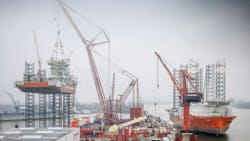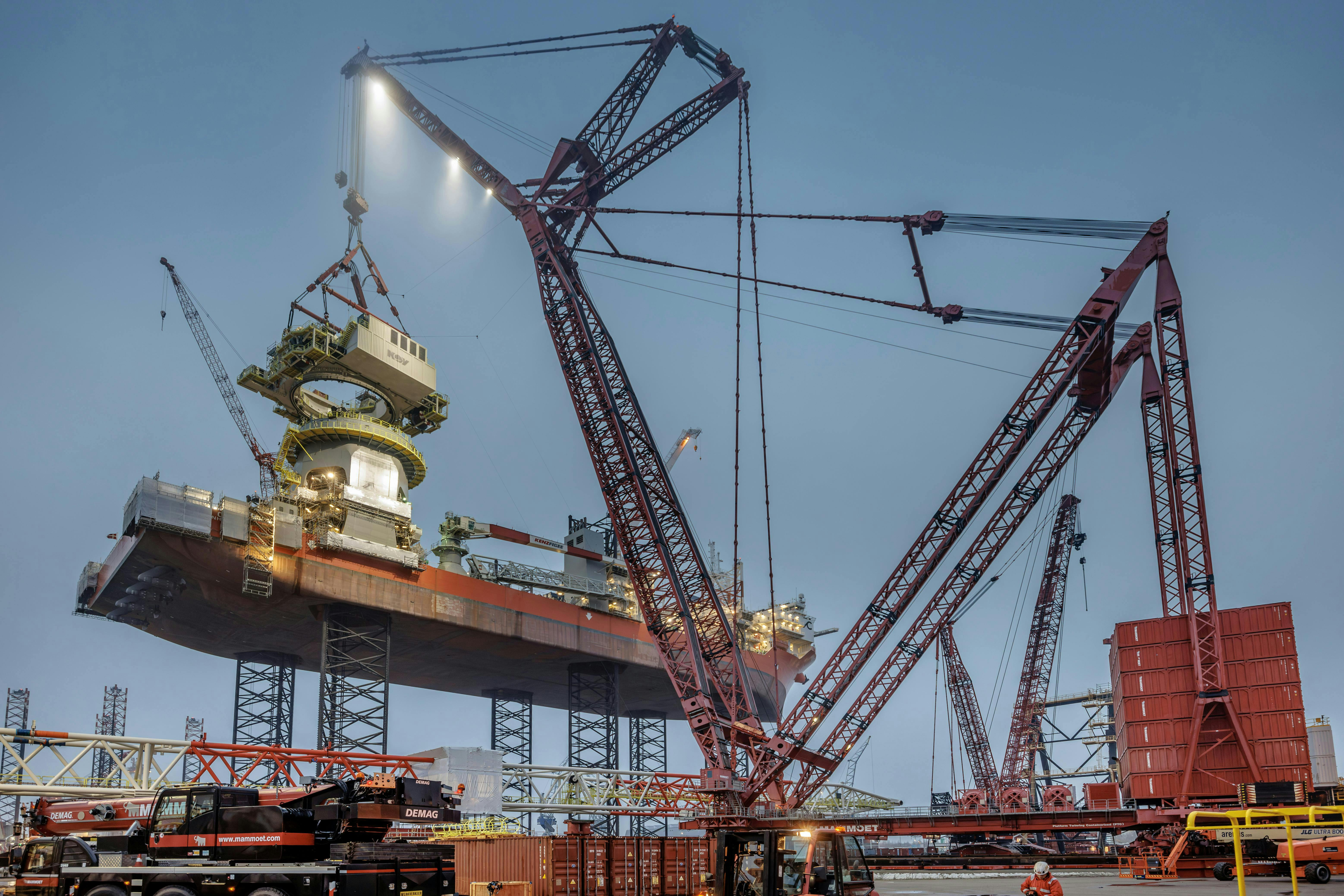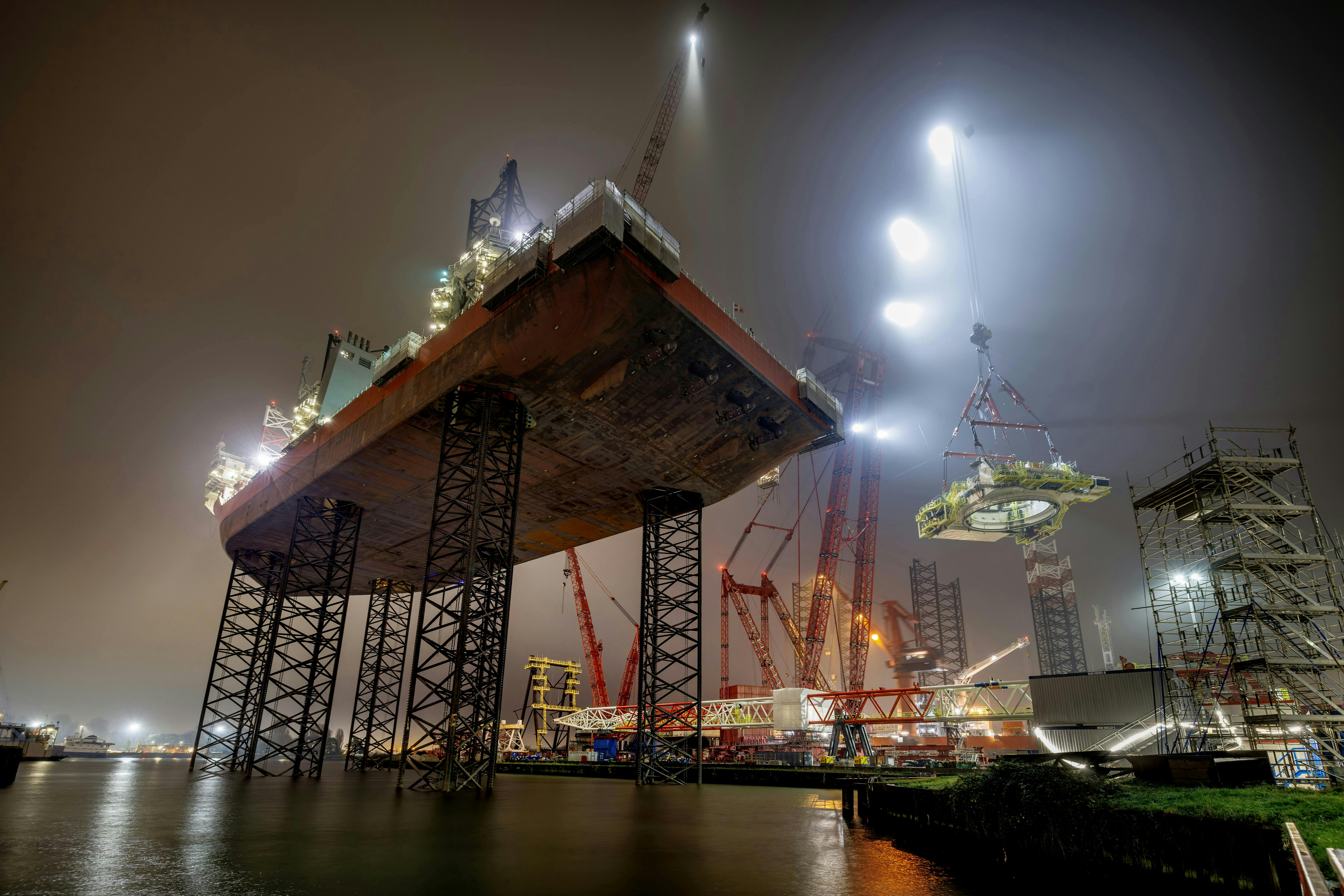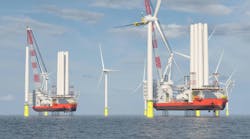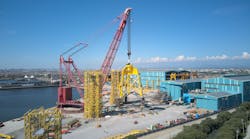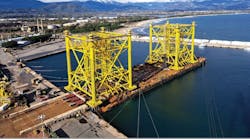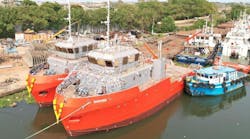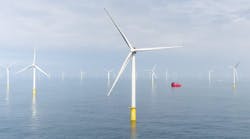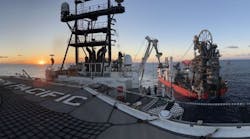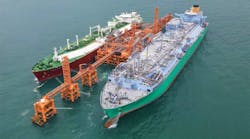Offshore staff
ROTTERDAM, the Netherlands — GustoMSC has contracted Mammoet to perform leg crane replacements on the Wind Orca and Wind Osprey wind farm installation jackup vessels for Cadeler.
The new leg cranes are electrically driven, with a 1,600-t lifting capacity, suitable for installing and servicing next-generation wind turbines rated at above 14 MW.
Mammoet used its PTC210-DS crane for the campaign, one of five 5000-t class ring cranes in its fleet. It occupies a relatively small footprint and provides 360-degree slewing, with the possibility to switch between fixed and luffing jib mode, expanding the working area.
The PTC cranes can be assembled in numerous configurations, with different mainboom and jib lengths, fixed or luffing jib, different amounts of counterweight, and two ring diameters.
These features were needed attributes for this project, in which the jackup vessels would be positioned on either side of Mammoet’s quay, which has a peninsula configuration. With Wind Orca and Wind Osprey moored on opposite sides of the quay, the PTC210-DS could be positioned in the center, slotted between the vessels.
Initially, safety assessments took place, with surveys determining that the dock comprised two L-shaped concrete constructions with softer ground in the middle. A soil survey was conducted at the planned location of the ring crane, with calculation models derived from the findings to predict the settlement of the soil under its weight.
To verify these models, load tests were performed at both locations where the ring crossed areas without a dock floor.
The new leg cranes had four main sections to install: the pedestal, the rotating platform, A-frame and the 149-m main boom. To improve stability and control during the main boom lifts, Mammoet deployed an LR1800-1.0 crawler crane as an assist crane; the PTC210-DS lifted one end of the boom while the crawler crane lifted the other.
Jacking up the vessels minimized the risk of collisions between the jackup leg and sections of the PTC210-DS crane during lifts, Mammoet said.
Work on Wind Orca and Wind Osprey will continue, with completion expected later in 2024.
04.04.2024
